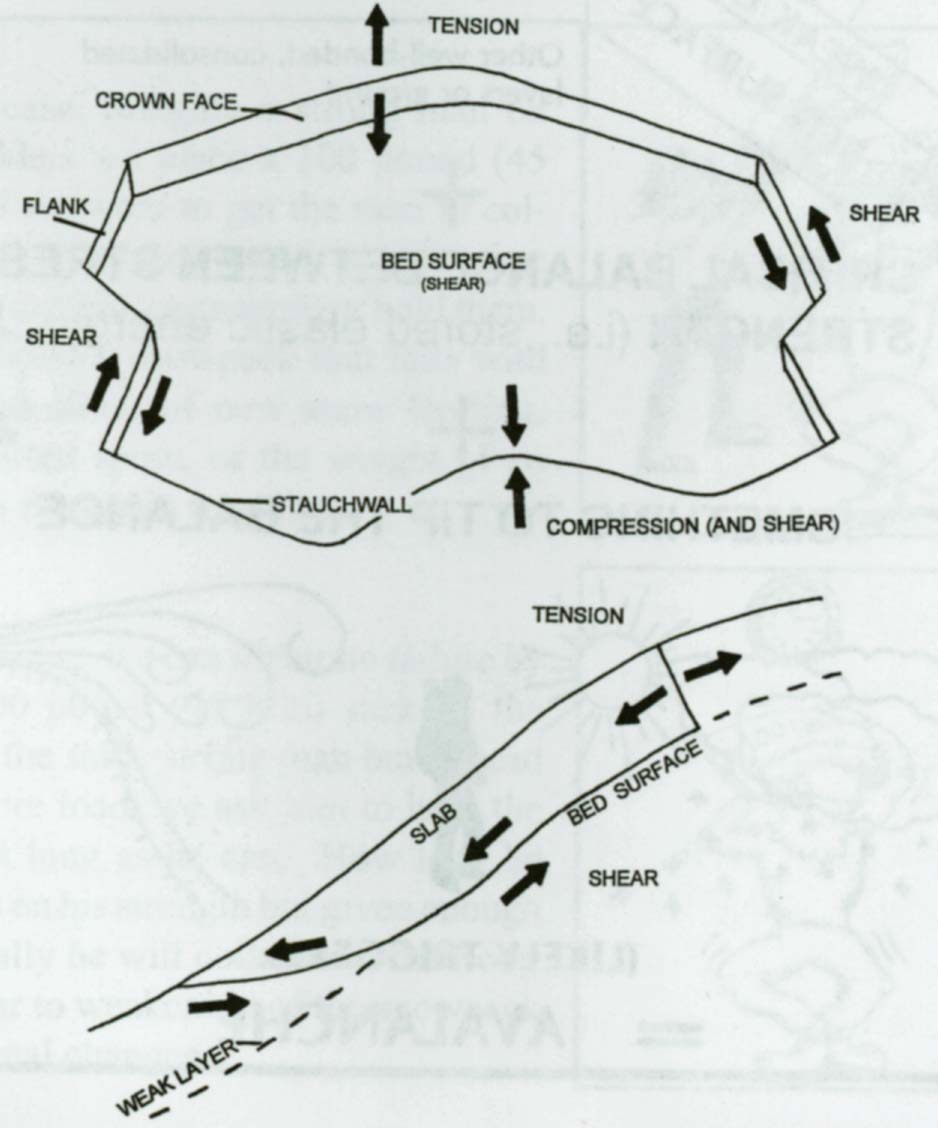Snow and Stress:
(Who ever thought those two words could coexist?)
Because snow avalanches come in a variety, there are a variety of stresses associated with avalanches. Wet avalanches and powder avalanches act very differently. Wet avalanches remain in contact with the sliding surface, relying on frictional forces for resistance. Powder avalanches are, to a great extent, airborne. This makes them susceptible to air resistance and turbulence instead of friction with the ground.

From "Avalanche Handbook" by Perla and Martinelli
The initial triggering of an avalanche comes from the imbalance of forces. In an unstable snowpack, there is a delicate balance between sticking and sliding. Tension and friction are what keep the snowpack intact. Often, the only thing holding the snow in its delicate balance is the exact weight of the snowpack and the lack of movement between grains. Addition of weight by windblown snow or by snowfall can trigger avalanches, and, more importantly for humans, the addition of a human or snowmachine can also shift the balance and start a slide.

From "Snow Sense" by Fredston and Fesler